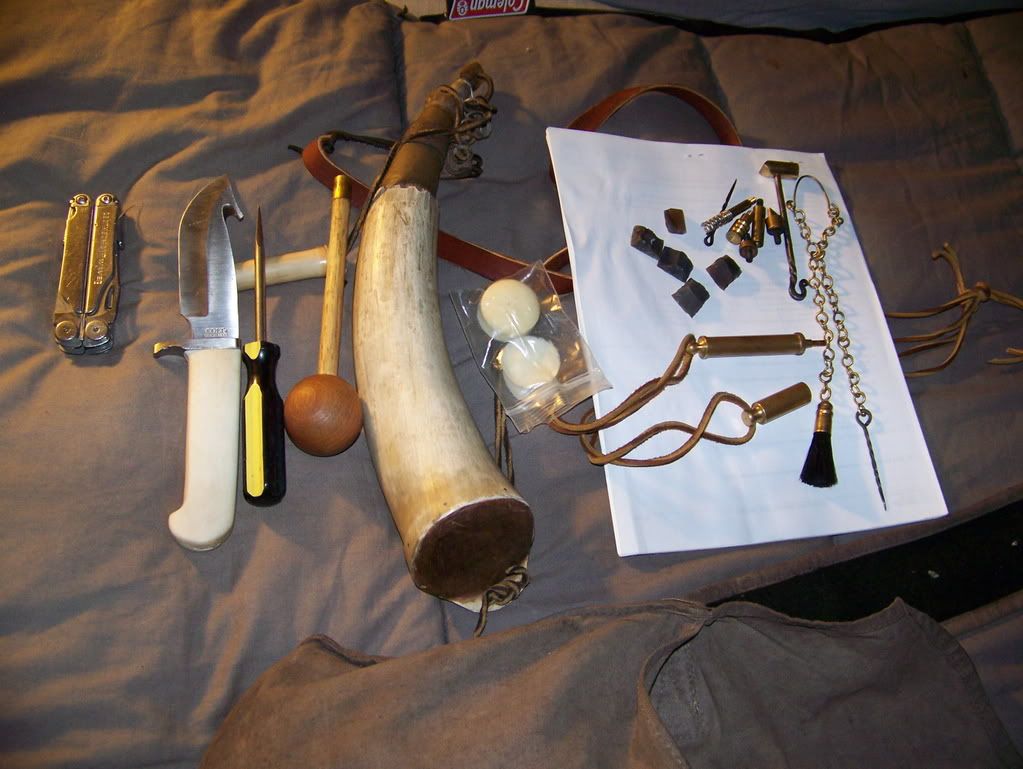Most of us who want to be " Traditional" end up with a powder horn, to carry our powder, rather than a flask. Flasks are appropriate for matchlocks, and Wheellocks, but at least in N. America, the powder horn became very popular during the flintlock era, and remained the primary powder supply carrier into the percussion era, for civilian use.
Now, there are 7000 grains to the pound. 1/4 pound is 1750 grains. But, 25 shots at 90 grains a shot is 2250 grains. I would suggest, therefore looking for a small horn that can carry up to 1/2 pound of powder to meet your goal.
For now, Use the flask with its powder measure. Just pour the powder from that measure to a SEPARATE( ie. from the powder flask) measure, before pouring the load into your rifle. Most of those attached powder measures require you to hold a thumb over the end of the tube, so that you then throw a measure of powder based on the length of the tube, when the gate is closed behind the powder.
I think you will be surprised at how inconsistent that method is for throwing powder charges. I was. I began learning as soon as I bought and used my adjustable measure. Then, I went home, pulled out my RCBS powder scale, and measured 10 throws from that flask.
That is when I decided that I didn't need those problems, together with that crud that was keeping the gate open so that some powder continued to dribble out as I was releasing the powder in the tube into my scale pan.
That also was the first time I took my flask apart, and Cleaned the gate.
I tried to blame the crud buildup on some sloppy factory oiling of the gate. But, as I continued to use the flask to pour powder into my separate powder measure, the gate loaded up again, both front and back, with residue, and I later became convinced that it was the relative humidity that pretty much controlled how much, and how thick, the crud would get on a given day.
I did experience a day at the range, Clear, cold, crisp, and very low Relative Humidity, when No crud appeared to stick to the gate.
Murphy was messing with me on that day! :rotf: :thumbsup:
Look at flat sided horns, because they are generally smaller, and hold less powder. The long, fancy round horns tend to get out of hand when it comes to size, and the amount of powder they hold.YOu can use those big horns, of course. No one says you have to fill them up with powder, to lug around.
I have two horns that are round, but shorter, than many you see, that would meet your criteria, so they are out there. One is an antique horn from the early 1800s, that is 10 inchs long, measured around the long arc, by 2.030" x 2.240" at the plug. The horn was obviously shortened about 100 years ago, when repairs were made, as some of the original scrimshaw work was cut through. The second horn is 8" long, over the arc, and the plug is almost a true 3 inches round. They both hold about 1/2 pound of powder.
I am using these horns to shoot a .50 caliber rifle with 65 and 75 grain loads for target, and hunting respectively. They also do duty to feed my 20 ga. fowler, and my 12 gauge DB shotgun.
I am building a .36 caliber rifle and will be making a small flat horn to carry enough powder to feed it when hunting rabbits, and squirrels. At 30 grains a shot Max, a salt shaker would probably hold enough FFFg BP for those needs. This one is intended to ride in the back pocket of my jeans, or in my front shirt pocket. I will limit it to 750 grains of powder. I have a priming horn that holds that much and more powder, as far as that goes!
Use the flask safely, and wait until you can get to one of the bigger rendezvous, or to Friendship where you can visit several venders that have horns for sale, I shopped hard to find both a priming horn and my main horn in the same style, and in the lengths I wanted. They were close enough that some people thought I had bought a matched set of horns! In truth, one horn came from one vender, and the other from another vender at Friendship. I do believe they were made by the same horner, however.
My antique horn was a gift, found in an antique mall by a friend, who bought it for next to nothing because of the damaged mouth. I had Bruce Horne restore the horn for me, and he did an excellent job. Bruce not only builds horns, and repairs them, but he collects them. He has some truly beautiful, as well as very old horns in his collection.
So, check on the antique shops, and estate sales, and garage sales to see what you can find. If you let antique shop owners know you are looking for such a horn, they will look for you, also. You don't have to buy any horn they call you about, but they will take your name and phone number and let you know if they have a horn they picked up somewhere. :thumbsup:





